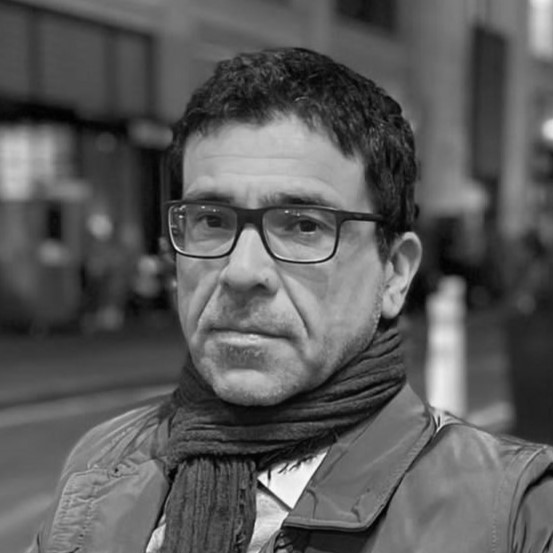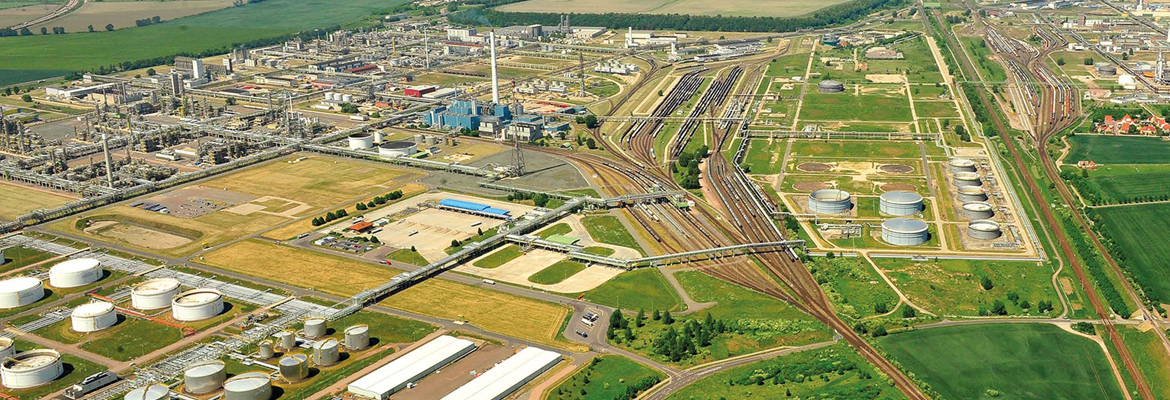Long gone are the days when the big enterprises of the early capitalism used to rule from within the innovation processes, from basic research to the marketing of new products. Nowadays such innovation processes are governed by large, complex and structured production chains, with various economic and non-economic actors, often with a local connotation, influencing their characteristics and results. An interest in clusters is not merely linked to their economic potential but also to their value as a planning tool by public intervention on the environment.
With the term bioeconomy – meant as an economy using biological resources as input for food, feed, energy and industrial production – we refer to a metasector worth 2 trillion euro in Europe, creating 22 million jobs, representing 9% of the overall workforce, according to the data released by the European Union. This implies that clusters with an interest in bioeconomy can include agriculture and food industry, green chemistry and industrial biotechnologies.
The only European cluster directly inspired by bioeconomy is Central Germany’s Bioeconomy Cluster (http://www.bioeconomy.de) based in Halle (Saxony-Anhalt), where a variety of partners in the industrial and research fields work towards the use of non-food biomasses for energy and new materials production. In the Saxon city, timber, chemical, plastic material and plant-engineering industries team up to build a dedicated regional centre for bioeconomy where the common objective is to expand rapidly from local workshops to industrial production.
In October 2012, German Chancellor Angela Merkel inaugurated the Fraunhofer Centre for Chemical-Biotechnological Processes CBP in Leuna, an innovative core of the Bioeconomy Cluster. At the biorefinery centre – unrivalled in Europe – processes are developed through a combination of chemical and biotechnological methods to allow extraction of basic chemical products from biomass for possible industrial use. It took twenty months and an investment of 53 million euro to open this cutting-edge centre, available to both universities and industries. “CBP is a milestone in the way towards the future of bioeconomy” claimed Chancellor Merkel on that occasion. She also believes that the Leuna Centre is “an excellent example of redevelopment of East Germany”.
The fact that Germany means business in bioeconomy and that part of its growth strategy is based on clusters is shown by the prominent role played by Cluster Industrielle Biotechnologie (CLIB 2021, http://www.clib2021.de), of North Rhine-Westphalia, which combines German excellence in the field of research and development, production and marketing in all sectors of bioeconomy.
Clib2021 was born in 2007, when the agglomerate of the North Rhine-Westphalia state won the public procurement by the Ministry for Federal Research and Innovation, being awarded 20 million euro in public funds. In April 2009, the CLIB-Graduate Cluster was created, a joint initiative of three universities within the cluster: Tu Dortmund, Bielefeld and Heinrich Heine of Düsseldorf.
Germany’s great manufacturing is heavily present: Altana, Basf, Henkel, Evonik, Lanxess and Bayer. In addition, there are over forty SMEs, universities and high-calibre research centres such as Fraunhofer, associations, banks and venture capital (since research must be funded). Clusters also include foreign members such as the A.N. Bach Institute of Biochemistry of the Russian Academy of Sciences, with which since 2010 the CLIB has started a coordination programme of scientific projects in the field of biotechnology or the Belgian Bio base Pilot Plan. The international nature of the cluster appears from the strong international relations that over the years have reached agreements with Brazil, Canada and Malaysia. The cluster is an independent entity, requiring stakes by its members according to their ability-to-pay principle and able to create a turnover.
German clusters are part of a strategy (“Bioeconomy 2030”) coordinated by the Federal Ministry of Research and Innovation outlining the national approach resulting in a post-oil economy, thanks to the use of renewable resources and biomasses. It also created a Federal Bioeconomy Council, an institution whose task is to come up with proposals to submit to the central government. Manufacturing and academia have to build strategic alliances along the whole production chain of bioeconomy in order to receive federal funds.
“Bioeconomy 2030” and the creation of the Federal Bioeconomy Council have had a significant impact on the European debate, speeding up the launch of the Union strategy “Innovation for growth – A Bioeconomy for Europe” in February 2012.
From Germany to France it is a short step. To single out the most representative cluster of the French bioeconomy one needs to head for Picardy. It is the point of convergence of world competitiveness of Industries and Agriculture Resources best known as IAR Pole (http://www.iar-pole.com), specialized in green chemistry and industrial biotechnologies: almost 200 active members, not just from Picardy but also from the Champagne-Ardenne Region, working together for an economy based on the use of renewable sources. It is the French industrial sector at its best: Michelin, Roquette, Veolia, Faurecia, Total but also L’Oreal, Danone and Lacoste, just to mention a few.
Near Reims, the capital of Champagne-Ardenne, the IAR Centre houses the European Institute of Biorefinery, one of the biggest in the world. Every year it transforms 3 million tons of biomass (beetroot, wheat, lucerne) into sugar, glucose, starch, nutritional alcohol, surgical spirit, ethanol and active ingredients for cosmetics. The French cluster is characterized by the principles of sharing and synergy: the Centre in Reims also includes a shared R&D lab (ARD), an industrial demonstration plant (Biodemo) and a research centre that links several colleges of further education (CEBB). In Reims a new project is also being developed, Futurol, for the production of second-generation biofuels that do not use biomass from crops.
While the main characteristic of the IAR Centre is synergy, the second is internationalization. The French cluster is not limited to regional scale but boasts partnerships with Europe, Canada, USA, Japan, Brazil and India. In the Old Continent, it is actively collaborating – together with the York University’s Green Chemistry Centre of Excellence – to the creation of a biorefinery intercluster. The French bioeconomy panorama also includes Axelera (http://www.axelera.org), a Chemistry and Environment cluster of Lyon & Rhône-Alpes Region specialized in green chemistry and recycling of materials; Agrimip, Agri Sud-Ouest Innovation (http://www.agrisudouest.com), a cluster for agriculture and the agricultural and food industry of the Aquitaine and Midi-Pyrénées Regions; and Xylofutur (http://www.xylofutur.fr) a cluster focused on paper of the Aquitaine Region. In march 2011, these clusters together with the IAR Centre created the United Bioeconomy Clusters (UBC), an association aiming at sharing a national strategic development vision focused on green chemistry and presenting French bioeconomy in a unified way abroad.
Recently, in Italy as well, a series of clusters devoted to bioeconomy have been created. Once again, this highlights the importance of teaming up when dealing with the challenges posed by the development of this metasector. The creation and development of eight national technological clusters was promoted in 2012 by the Ministry of Education, University and Research with the aim to identify opportunities – clusters organized by companies, universities, private or public research institutions and individuals focused on innovation and active in different national areas – able to act as catalysts of sustainable economic growth both at local and national level.
The most important is surely the national green chemistry technological Cluster created by three of the major players in the Italian bioeconomy: Novamont, Versalis (Gruppo ENI) and Biochemtex (MossiGhisolfi Group), in collaboration with Federchimica, the Italian Federation of Chemical Industry.
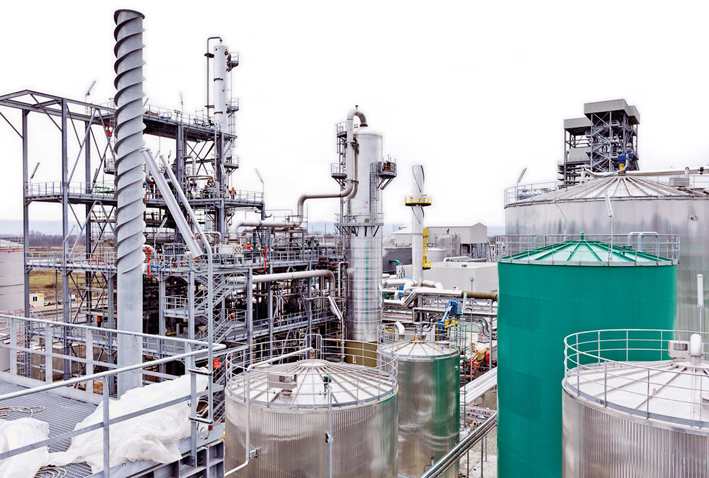 |
|
The Crescentino Biorefinery owned by MossiGhisolfi Group, the first plant for the production of second-generation biofuels in the world. |
The goal of the green chemistry cluster, which adopted the acronym SPRING – Sustainable Processes and Resources for Innovation and National Growth (http://www.clusterspring.it), is to promote the development of bioindustries in Italy through an integrated innovation approach to relaunch Italian chemical industry characterized by environmental, social and economic sustainability and to stimulate research and investment in new technologies. The goal is to boost national and international competitiveness in the field of biobased products and to pursue EU’s most recent guidance on bioeconomy.
SPRING has over one hundred members operating on different levels in bioeconomy and representing Italian excellence in this field: big industrial players, biotech SMEs, universities, research centres, institutions, regional innovation centres and many others promoting innovation and technological transfer.
The actions of the Cluster, which has appointed Catia Bastioli (Novamont’s managing director and true leader of the Made-in-Italy bioeconomy) as its president, are characterized in the short and long run by four main pillars: the promotion of a cascading use of biomass closely connected with agriculture and local biodiversity; the development of innovative technologies and efficient processes for the creation of integrated, third-generation biorefineries; the market-driven development of biobased products and devising green public procurement and bioeconomy incentive actions both at regional and national level.
“Agriculture meets chemistry” is the slogan chosen by Biobased Delta (http://www.biobaseddelta.nl), a bioeconomy cluster in the Southwest of the Netherlands, to highlight the importance of agricultural residues for biobased industrial innovation. For chemistry in particular, since the Dutch cluster is part of a bigger chemical one created by Antwerp, Rotterdam and Ruhr Regions.
Biobased Delta is home to Biorizon, a shared research centre (in partnership with Ghent Bio Base Europe Centre of Education to Bioeconomy) specialized in the development of technologies for the production of aromatic compounds from renewable sources to be used in high-performance materials, chemical products and coating. Its aim is ambitious: in the coming years to be one of the three main world players in this kind of research. To this end it has pursued and intensive activity of international partnerships, from Brazil to Canada. In January 2014 a memorandum of understanding was also signed in Reims, at the headquarters of the IAR centre, by Willem Sederel, CEO of Biobased Delta, and by President François Hollande, to promote the use of Biorizon by the French manufacturing sector.
Besides, other initiatives of the Dutch cluster include a green chemistry Campus, a startup accelerator for renewable-sources-use innovation. In the headquarters of Sabic Innovative Plastics (a company controlled by the Saudi petrochemical colossus Sabic) in Bergen op Zoom, small and big businesses, research centres, universities and government institutions work closely in an open innovation environment to develop strictly biobased technologies able to exploit agricultural and food residue flows.
In a nutshell, from North to South, the European approach to bioeconomy is based on clusters that become the real driving force behind development and innovation, a tool able to promote a partnership between different actors and the rapid exchange of knowledge. Experts claim that all this generates a competitive environment that creates favourable opportunities for new businesses and new jobs.

Interview with Horst Mosler, CEO of BCM – Bioeconomy Cluster Management GmbH, the company that manages the cluster for the bioeconomy based Halle, Germany
The Bioeconomy Needs Basic Regional Structures
Mr. Mosler, what is the role of clusters in promoting the development of the bioeconomy in Europe?
There are many industries involved in the formation of the new economic sector bioeconomy. Therefore it is necessary to establish connecting points. The bioeconomy itself needs basic regional structures in which resource-efficient material flows and value chains can be developed.
Therefore clusters are an excellent type of organization. They are linking both the industry and science on the subject of bioeconomy as well as transforming regional approaches into pan-European strategies. Another important task is the expert advice to government, authorities and the promoters of economic development in the European Union. E.g. we are supporting Saxony-Anhalt to get internationally known as a European model region of the bioeconomy.
What differentiates BioEconomy Cluster from all other European clusters which are involved in the bioeconomy?
The BioEconomy Cluster is not specialized on one single industrial sector. The specialization is focused on defined value chains on the base of non-food-biomass as raw material. Accordingly, there is a wide diversity in the range of cluster actors in the field of science and research, forestry and timber industry, construction industry, chemical industry, plastics industry, the automotive, mechanical engineering and plant construction, or the energy industry. With approximately 40% of German beech wood stand the cluster region also has a significant biomass potential, which can be activated for material use. A real unique selling point is the integration into an established chemical region. The industrial park in Leuna is the chemical site with the largest area in Germany.
First biorefineries have been built there in the pilot and demonstration scale.
What is the governance of your cluster?
We are still a very young cluster. With the ambitious idea to establish a model region in Central Germany for the bioeconomy in Europe, 15 partners from industry and research have gathered in 2011. The consortium applied with success on the Leading Edge Cluster Competition announced by the German Federal Ministry for Science and Research. Our cluster actors are organized in the association BioEconomy e.V. since 2012. The development of the cluster is accompanied by an advisory research cooperation of the German Biomass Research Center, the German Environmental Research Center and the HHL Leipzig Graduate School of Management.
Currently there are R&D projects with a total budget of about 80 million euros operated in the cluster in line with the funding of the Leading Edge Cluster Competition. In addition the state of Saxony-Anhalt, core region of the BioEconomy Cluster is promoting the further cluster development. In 2014 the federal state government has anchored the combination of chemistry and bioeconomy in its current lead market strategy as a part of the regional innovation strategy.
How can the different clusters work together to support the economic growth in Europe?
Cross-cluster cooperation is a central approach in this process. To accelerate innovations and new economies it is important to identify and use thematic intersections. Through the systematic transfer of technology and the exchange of knowledge at an international level the market position of the European industry can be strengthened significantly.
And how important is international cooperation for the bioeconomy?
In a globalized economy, purely regional activities are not competitive any more. This is also applicable for the bioeconomy.
To attract eligible industry partners we put a strong emphasis on international visibility. So we are member of the ECRN project council, where 20 European regions are connected and take part in an international public private partnership between industry and the EU, the Biobased Industries Consortium, promoting pilot- and demo-plants in international cooperation.
How important is the industry-university relationship for the bioeconomy?
This relationship is of course of significant importance. Firstly, the fundamental research takes place in universities. Based on these results the research institutes for Applied Sciences and their industry partners can operate together in the research and development of new processes and products and finally the commercialization of bioeconomical approaches. Especially in our bioeconomy there is a lot of potential for new materials with unique skills that could arise from renewable resources.
On the other hand universities and educational institutions are important partners for the professional training, advanced training and study programmes to prepare specialists for a biobased economy. The implementation of the bioeconomy leads to new job profiles that we are developing together with our partners in education. Once more our cluster region offers excellent conditions, for example, with the HHL Leipzig Graduate School of Management, the Martin-Luther-University Halle, the Anhalt University of Applied Sciences and the training academy BAL at the Leuna chemical site.
What are, from your point of view, the strengths and weaknesses of the European bioeconomy?
An explicit strength can be multi-product biorefineries. The European approach of the bioeconomy already is addressing a whole range of platform chemicals. A lot of production processes are developed in the pilot or demonstration scale, while in overseas countries isolated individual concepts are often dominating. Overall, the way of an integrated approach of the bioeconomy in Europe is followed more consistently. However, especially in the area of biorefineries, the new market approaches barely fit into the existing business of the companies. Here we need new operating models that are based on diversification strategies.
What legislative measures are still lacking in the European Union for ensuring a coordinated and sustainable development of the bioeconomy?
What we need is a clear legal framework promoting the motivation to convert from the fossil to a biobased economy or at least to establish a certain share of sustainable materials. What has led in the fuel sector to new products and drop-in solutions might work as an incentive mechanism in the material field. Also in the construction industry guidelines and regulations stimulating the use of biobased products and building systems could accelerate the demand.
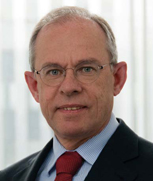
Interview with Manfred Kircher, Chairman of the Advisory Committee of Clib2021
Clusters Serve as Technology as well as Market Radar
What is the role of clusters in promoting the development of the bioeconomy in Europe?
Clusters sharing a joint vision and bringing together established and young companies, research institutions and investors pioneer bioeconomy value chains. Through the accumulated know-how of all members clusters serve as technology as well as market radar, thus identifying market trends and bioeconomy solutions early. Clusters support their members gaining competitive advantage.
What differentiates CLIB2021 from all other European clusters which are involved in the bioeconomy?
CLIB2021 is unique both through its membership and its strategy: multinational chemical industries provide the critical market for new technologies and products; young companies push bio-process, bio-products as well as instruments; research institutions provide the necessary science and train the next generation and investors promote and develop start-ups. To ensure leadership and competitiveness CLIB is open to international members. In addition regional pillars of competence are addressed because as any cluster CLIB needs a strong home base.
How can the different clusters work together to support the economic growth in Europe?
Clusters are different due to specific regional strengths and stakeholders, e.g. industrial players. Some might be strong in feedstock production, other in processing, commercialization, science or specific markets.
Clusters should on the one hand focus on their home region but on the other reach out. Synergistic cooperation of clusters will result in cross-regional value chains, thus growing the economy.
Clib2021 is a German regional cluster, open not only to all the German players but also to the players of the rest of the world. How important is the international cooperation for the bioeconomy?
30% of our members are located beyond Germany in Europe, North-America, Russia, China and South-East Asia. From the very beginning CLIB pursued not only sector- but also border-crossing value chains. In our understanding the bioeconomy is a global issue targeting on a meaningful share of the world economy – concerning the flow of feedstock and goods but also the exchange of technologies and know-how. Therefore, CLIB addresses regional as well as international value chains by providing suitable communication platforms.
What is the governance of Clib2021?
CLIB is a non-profit association governed by the board. Board members are recruited from the membership groups industry, Sme (small and medium-sized enterprises), academia and investors. An international advisory board representing the very same groups is supporting the board. The cluster management is financed by membership and services fees.
Did you set up the CLIB graduate cluster? How important is the industry-university relationship for the bioeconomy?
The bioeconomy is in the true sense of the word science and knowledge-based. Therefore fast and efficient transfer of science into applicable technologies is crucial. The CLIB Graduate Cluster contributes in many respects: i) Disciplines esp. relevant for the bioeconomy attract talented graduates; ii) through the industrial internship young scientists get in contact with industrial research questions and iii) many of these graduates will start their career in Sme or industry, thus transferring academic know-how into the practicable economy.
By the way, this program is financed by North Rhine-Westphalia’s innovation ministry (MIWF), thus proving the catalyzing role of CLIB in realizing this state’s bioeconomy strategy.
What are, from your point of view, the strengths and weaknesses of the European bioeconomy?
Let’s begin with strength: Europe has a widely recognized track record in industrial leadership, outstanding infrastructure and cutting-edge academic as well industrial Research & Development.
Europe’s diversity gives us the opportunity to search for the best regional bioeconomy concepts in a competitive but also synergistic way. Regional clusters are the motors of such partnering models. Last but not least Europe starts from the well-established bioeconomy in agriculture, forestry, fishery and related industries and has a clear vision till 2050.
However, pushing new technologies into industrial practice and markets takes too long. Raising private capital for investments is easier elsewhere.
The negative response from the general public concerning specific technologies is another hurdle. All these issues – shortening time to market, providing attractive investment opportunities and gaining public acceptance – are addressed by CLIB.
What legislative measures are still lacking in the European Union for ensuring a coordinated and sustainable development of the bioeconomy?
The European bioeconomy has to prove itself internally against fossil-based value chains and externally against other global regions.
Both aspects need to be addressed by European legislation. If you ask for my personal opinion cost of feedstock is crucial and legislation should care for competitiveness of domestic bioeconomy feedstock with fossil resources and global markets. In this context legislation should look at the bioeconomy in the wider sense of a cyclic economy and promote industrial side streams such as CO/CO2 as a sustainable carbon source. The chemical sector which generates in Europe significant value and employment should get the same attention as the currently prioritized energy and fuel sector.
Generally legislation should set the frame but leave the technical and economical formation of the bioeconomy up to the stakeholders. Managing these stakeholders efficiently and successfully will be the focus at CLIB in the coming years.
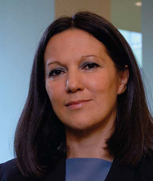
Interview with Catia Bastioli, President of SPRING, Italian National Technological Cluster of Green Chemistry
Thanks to Cluster SPRING, we are Building the Italian Bioeconomy Starting from Local Areas
SPRING is the youngest European Cluster in the field of the bioeconomy. What were the objective it was created for?
The Cluster SPRING was born in 2012 in response to a public call by the Italian Ministry of Education, University and Research, with the aim of giving birth to a national platform with a common vision: to start from bioeconomy and local territories in order to boost the growth of the country. An ambitious purpose, however, which does not come out of the blue. SPRING relies on a very solid base of skills, know-how, demonstrator plants already present in Italy, which are the result of years of investments in research, as well as of the will of some industrial actors to generate case studies that could give a contribution in the development of an Italian model of bioeconomy, integrating different skills and disciplines: from agriculture, to chemistry, to waste management.
Who are the Cluster actors and what is its governance structure?
The Cluster SPRING was created as a non-profit association, and currently counts nearly a hundred ordinary members. They are all realities operating in different ways in the field of bioeconomy and representing the Italian excellence along the value-chain of “green chemistry”: large industry players, SMEs, regional innovation clusters, trade and local associations, development agencies, foundations, and many other actors in the area of technology transfer and environmental communication. Among these, we must mention also the main public research centres referring to the Ministry of Education, University and Research and the Ministry of Agriculture and Economic Development, as well as some of the most prestigious universities in the country. SPRING can also count on the support of eight italian regions, whose local policies meet with the Cluster objectives and are strongly oriented towards bioeconomy. The Cluster is presided over by a Board of Directors, composed of representatives elected by four Committees, respectively established for Industrial Innovation, Public Research, Dissemination and Territorial Development.
In what way can SPRING contribute in speeding up and strengthening the Italian transition towards a more sustainable model of development?
The big challenge that Italy is facing is territorial regeneration, which means to aim towards a common national objective starting from local areas and enhancing their specificities, giving rise to new agro-industrial supply-chains and using innovative technologies able to reconvert obsolete or disused plants and create new employment and growth opportunities. SPRING intends to face this challenge and encourage the development of Italian bioindustries and investments in new technologies, aware that the concept of “green” chemistry does not only mean new more sustainable products, but also new models and a new common culture, able to bring together very different groups of interest – often on contrary opinions – through sharing a common project of territorial regeneration.
In general, what is in your opinion the role of clusters in encouraging the development of bioeconomy in Europe?
The role of national clusters operating in the field of bioeconomy should be that of mobilizing the country-system towards common objectives, in order to define a strategy that could start from local areas and their specificities. In this respect, Clusters represent the ideal tool to have European regional differences converge into a unified development model, while preserving at the same time the peculiarities related to the history, productive model and geographical aspects of each Member State.
Italy is one of the few countries in Europe still without a National Strategic Plan for Bioeconomy. How do you interpret this gap?
Italy has not formalized its National Strategic Plan yet but, in some ways, it already represents a model of bioeconomy. Consider for example the virtuous case of bioplastics, which offer solutions able to turn environmental problems – such as organic waste – into resources. Cases like this show that Italy is largely capable to give origin to highly innovative and systemic models, examples both in terms of competitiveness and of international consensus. Let’s also point out the important effort currently being carried out to implement the upstream integration of the bioplastic supply-chain, the innovations in the field of second-generation sugars and the project of relaunching petrochemistry in synergy with new technologies based on renewable resources.
However, it is essential to be able to rely on a clear national strategy, that could identify among its priorities the push of products able of reducing the costs of externalities on environment, health and society and whose production could represent a real opportunity of restart in areas affected by crisis. Only in this way the economic and cultural leap – which Italy is prepared for at a technological level – will be possible.
What are the fundamental points that an Italian national plan should include?
Italy, compared to other countries, presents a number of preconditions that favour the transition towards a development model based on bioeconomy: from its geographical features to the structure of the agricultural sector, from infrastructures to the research know-how in the field of bioplastics and chemistry for renewable sources. Let’s not forget the obsolescence of some industrial sectors, not competitive anymore due to lack of innovation over the years, and which might end up blocking huge resources if not replaced or integrated by innovative and vital sectors – able of rethinking quality and environmental performance of products and their production system. An Italian plan should therefore consider all these preconditions and turn them into strengths, starting from the available technologies ready for scale jumping. The aim is to trigger re-industrialization and territorial regeneration, in terms of a positive contamination of various compartments, creating added value and generating new employment – not only in the chemical industry, but also along the whole supply chain – as well as new interactions among agriculture, industry and social fabric.
Another key issue is that of standards. In order to boost Italy’s growth, it is essential that the virtuous processes described above – besides leading to positive impacts of research on the industrial sector – could drive at developing new products that meet high quality standards. These standards must be able to “raise the bar”, focusing on territories and minimizing the environmental costs for citizens. In order to achieve all this, however, it is necessary to overcome the concept of product in its individuality, and to consider it as a part of a system of production-consumption-disposal and in relation to its externalities.
Finally, biorefineries integrated in local areas, through the creation of public-private partnerships, have the potential of multiplying business initiatives and educational projects that can help new start-ups, while offering high-quality training opportunities to young graduates, college graduates, PhD doctors and all those people that have left the labour market.
What are, in your opinion, the strengths and weaknesses of European bioeconomy?
European bioeconomy can boast of technological leadership positions immediately exploitable and already patented, with recently-built or under-construction production plants, against a phenomenon of deindustrialization that is affecting traditional chemistry and other industrial sectors. What needs to be improved are the instruments, both financial and policy-related, that can allow a rapid industrial growth of sectors offering solutions to significant environmental problems, through the recognition of the cost of externalities generated by traditional products. This would present the triple benefit of promoting scale-jumping of the related technologies, of reducing environmental costs, and of acquiring a comparative advantage promoting the export of higher-value products and reducing commodity imports. Speed is a key issue in this sense: it is necessary to change direction, and to intervene on the speed of innovation in order to avoid product obsolescence to result in high costs of deindustrialization and imports.
Is there a particular measure that you would like to recommend to the new President of the European Commission, Mr Junker, in order to stimulate bioeconomy?
Bioeconomy can become a key driver for the development of Europe, if managed with a holistic and system-based approach able to integrate industry, agriculture, environment, education, research, finance and the labour market. It needs to focus on agricultural raw materials, local scraps and the technologies that Europe has developed and is currently developing, following a logic of efficient use of the resources available in every local area and always respecting their specificities and culture – while enhancing a series of high-quality products from integrated long supply-chains.
To this end, it would be essential to give birth to an Interdisciplinary Committee for the management of the Bioeconomy Strategy, that should avoid what happened in the past with narrow sectorial approach. Let’s just think about energy, which is a service: every specific measure should never leave out of consideration its possible effects on agriculture and industrial supply-chains.


